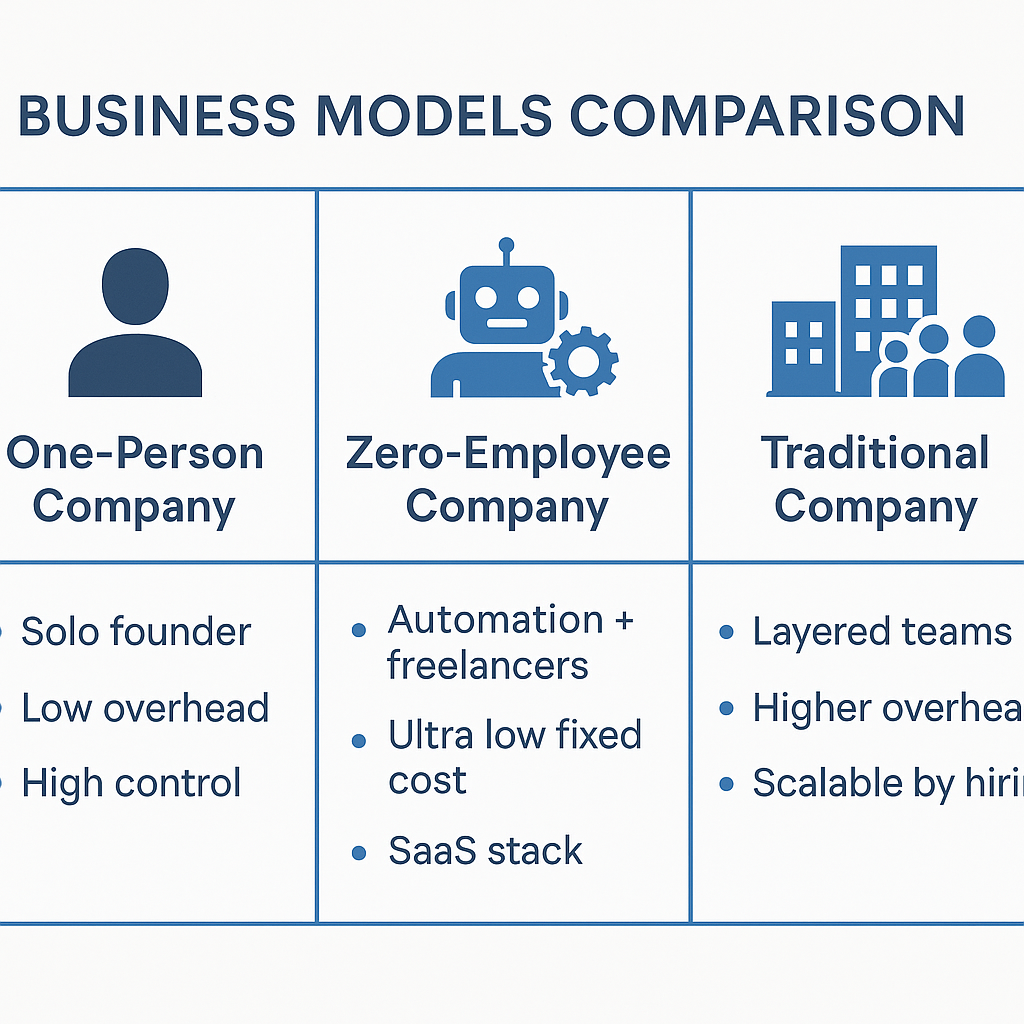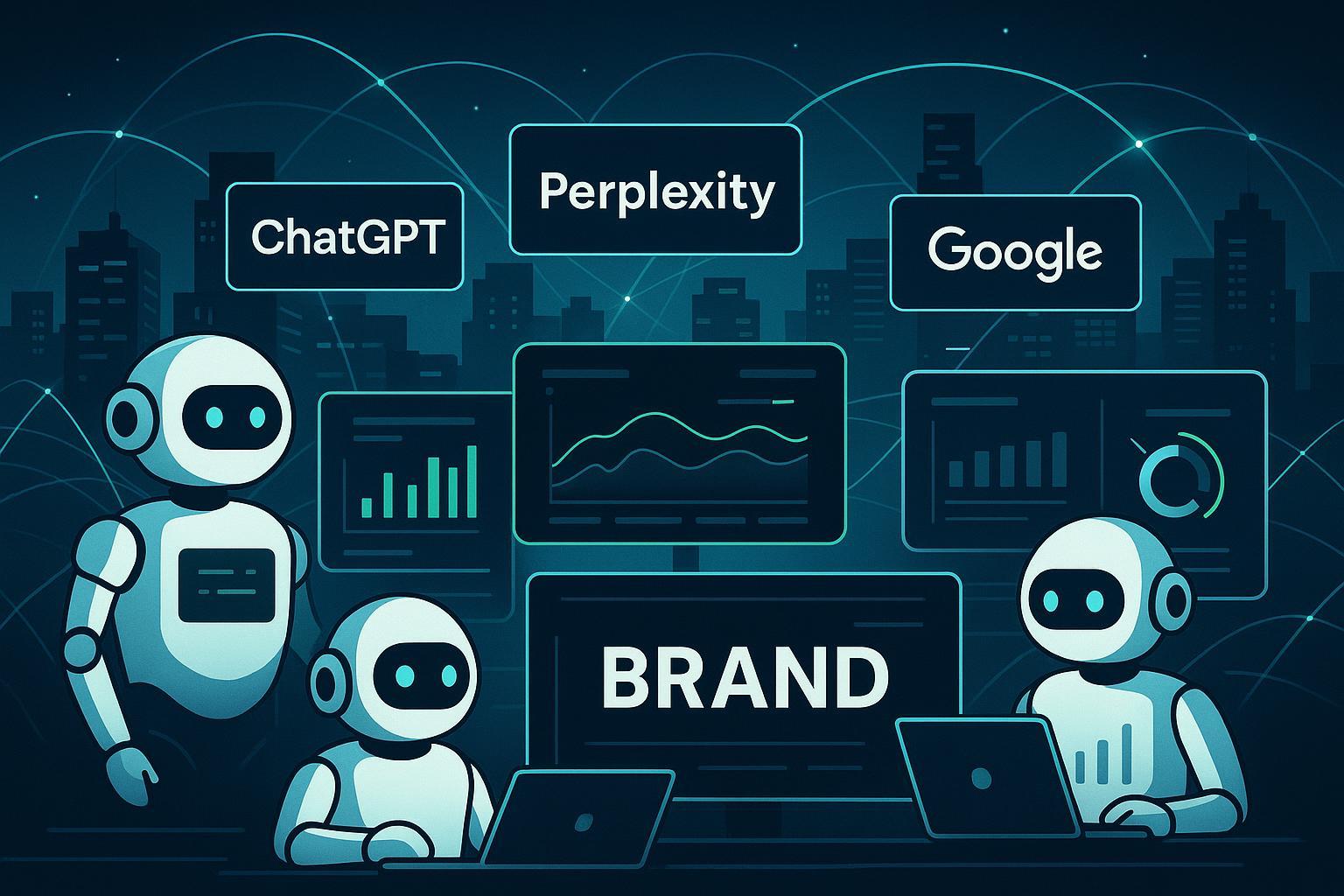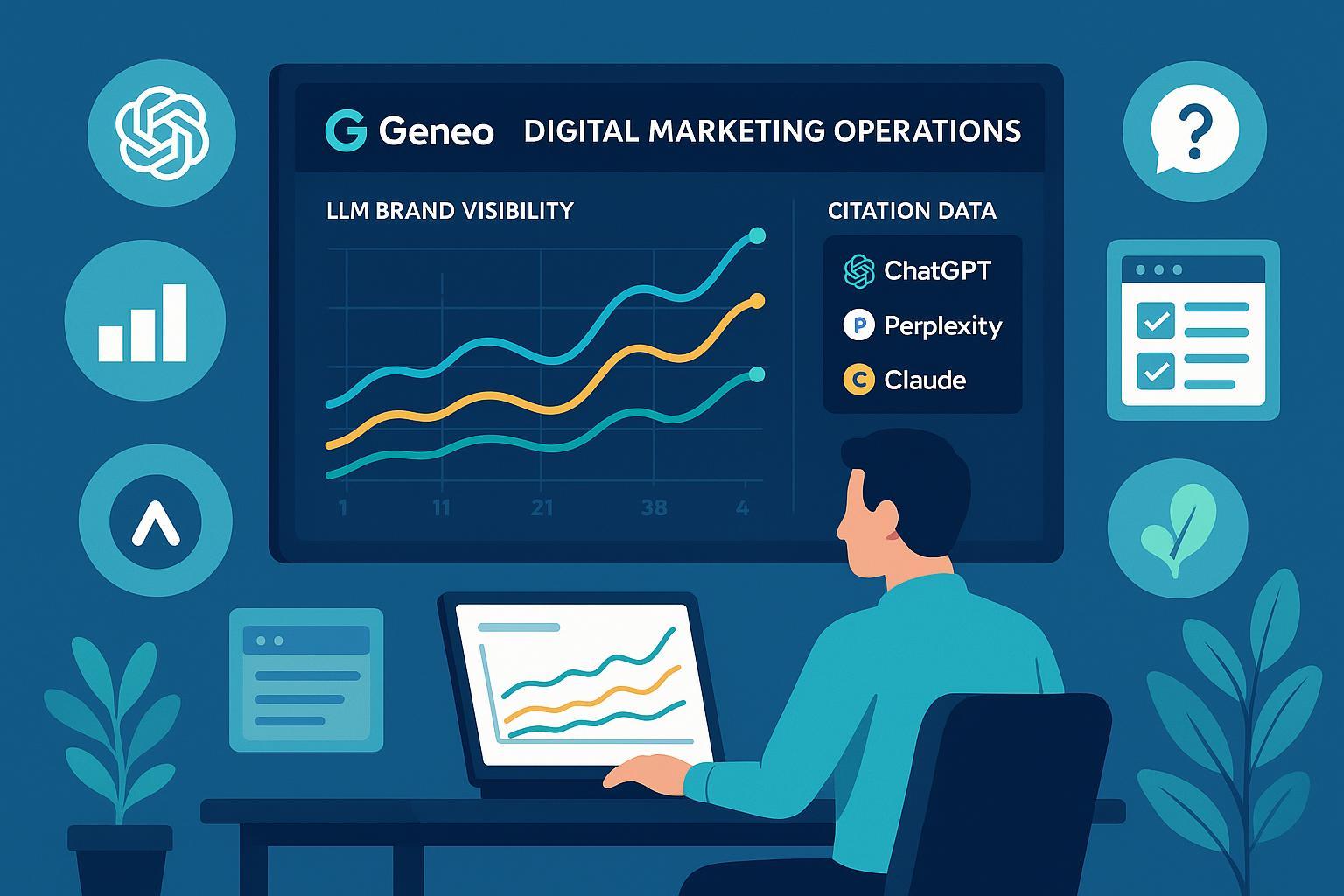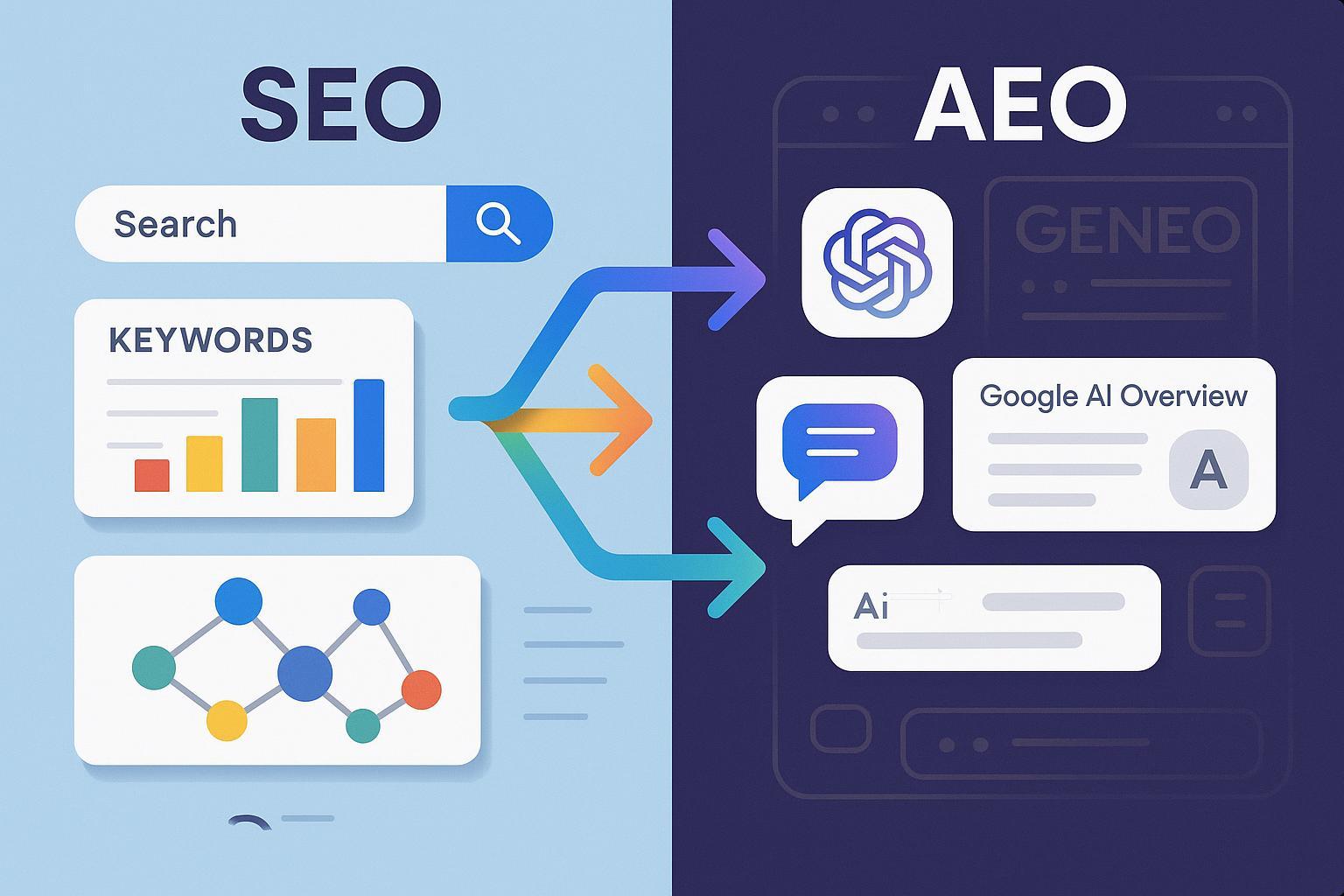Compare Zero-Employee Company with Other Company Types


3-Sentence Snapshot
Model | One-Line Definition |
|---|---|
One-Person Company | A single shareholder who is also the lone full-time operator; can leverage freelancers and tools. Ultra-lean, full control. |
Zero-Employee Company | Shareholder(s) ≠ employee(s); official head-count is 0. All execution handled by SaaS, AI agents, and external contractors. Super-light, fully automated. |
Traditional Company | Multiple owners, layered teams, diverse roles. Builds in-house capabilities and culture; heavier assets, collaborative division of labor. |
Note In many jurisdictions a legal “single-member LLC” maps to the One-Person model, but here we extend the concept to mean: one owner, one full-time worker—same person.
Deep Comparison by Key Dimension
Dimension | One-Person Company | Zero-Employee Company | Traditional Company |
|---|---|---|---|
Launch Cost | Low: registration + basic SaaS | Ultra-low: shell entity (e.g., Cayman LLC) + cloud services | Medium–high: registration + office + first hires |
Fixed Overhead | Personal social security, minimal workspace | Near-zero, pay-as-you-go subscriptions | Salaries, benefits, facilities, management layers |
Scalability | Bounded by founder’s time; lateral expansion limited | Rapid horizontal cloning via APIs/freelancers | Vertical scaling by hiring; economies of scale |
Management Complexity | Low—solo decision-maker | Ultra-low—workflow automation, vendor coordination | High—hierarchies, culture building |
Risk Resilience | Highly dependent on founder health & stamina | Dependent on vendors/platforms (API price hikes, SaaS shutdowns) | Risk diversified across roles and systems |
Fund-Raising & Brand | Micro-rounds; founder’s personal brand tied to firm | Investors still experimenting (DAO/SAFT possible) | Favored by mainstream VC/PE; higher brand trust |
Compliance & Tax | Simple (small-scale taxpayer) | Watch labor/virtual-office legality | Full compliance stack: social insurance, labor law |
Tech / Tool Stack | Strong AI, no-code, automation skills | Extreme reliance on orchestration & serverless | Conventional IT + internal platforms |
Typical Use Cases | Consulting, boutique SaaS, knowledge products | Pure digital goods, on-chain protocols, data APIs | Manufacturing, e-commerce, offline services |
Which Model Fits You?
High-leverage personal expertise (dev, design, consulting, content) and a need for quick validation → One-Person Company keeps efficiency maxed.
Desire to componentize every process—Zapier/Make + GPT agents + global freelancers—to chase “sleep-income” at scale → experiment with a Zero-Employee Company, but build fallback APIs.
You need proprietary IP, production lines, or strong client credibility (medical devices, cross-border logistics, enterprise deals) or plan to raise a Series A in 3–5 years → a Traditional Company and its organizational moat are still best.
Practical Reminders
Liability Shield Even for zero-employee setups, avoid long-term personal invoicing; register an LLC to ring-fence personal assets.
Vendor Redundancy Zero-employee firms should pre-plan substitutes for critical SaaS (email, payments) to avoid single-point failure.
Founder Health & Rhythm One-person shops often drift into “full-stack burnout.” Document and systematize repetitive work, then outsource gradually.
Culture & Talent Magnet When graduating from one/zero → traditional, instill vision and values early—retrofitting culture later is costly.
Investor Narrative Zero-employee pitches: “margin + automation multiplier.” Traditional-company pitches: “market size + organizational moat.”
One-Sentence Takeaway
Choosing between “one,” “zero,” and “many” staff is really a trade-off among capital, time, risk, and control. Map your growth curve and lifestyle goals first—then pick the structure that lets you execute with confidence.





